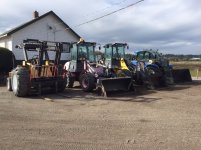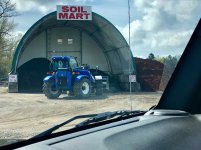Frank Sorbello
Gold Member
- Joined
- Jul 12, 2011
- Messages
- 361
- Tractor
- Power Trac PT-422
I have a PT-422 with I believe is the regular dirt bucket. How many of these full buckets is equivalent to one yard?
Thanks
Frank
Thanks
Frank

